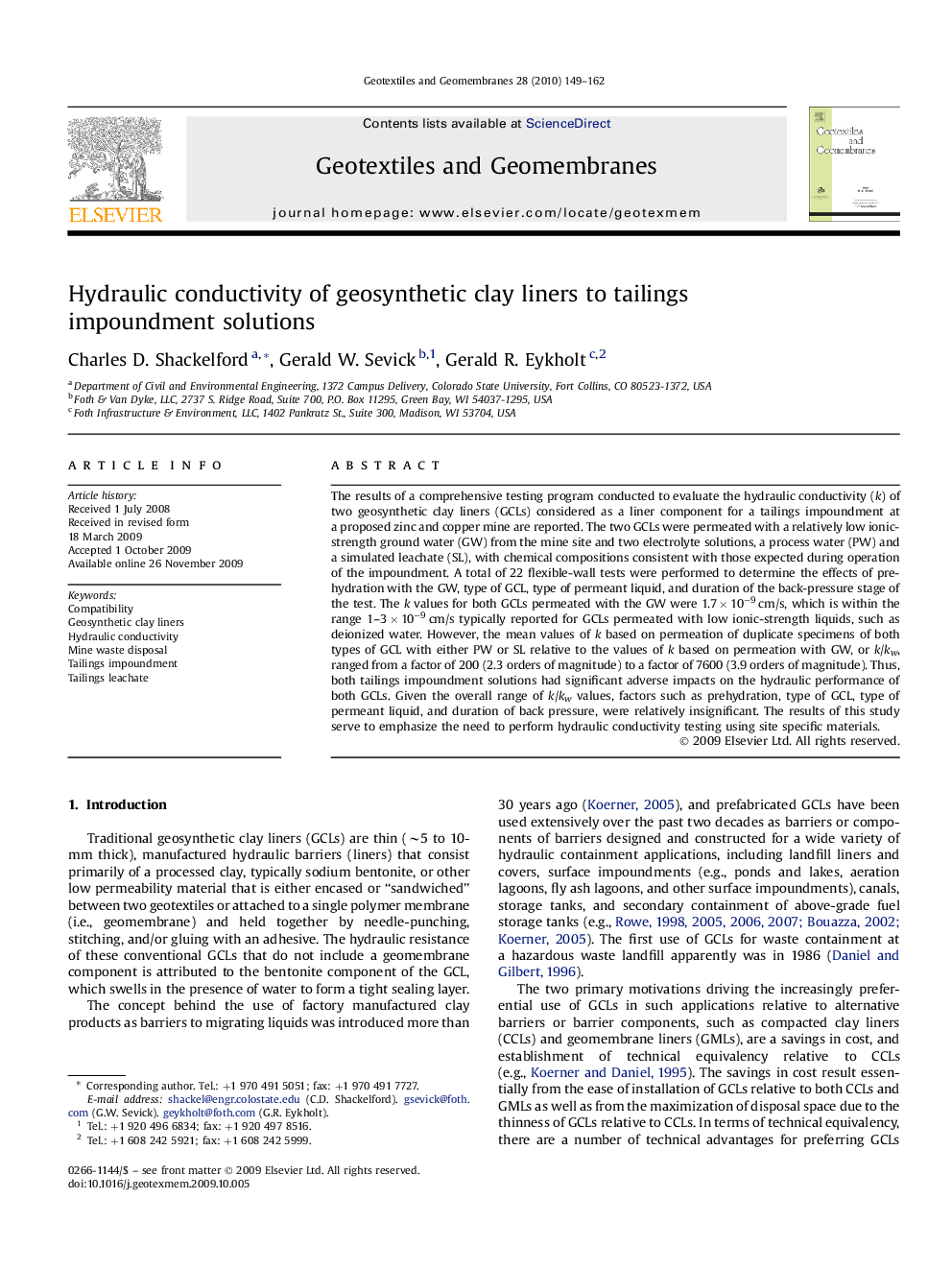| Article ID | Journal | Published Year | Pages | File Type |
|---|---|---|---|---|
| 274460 | Geotextiles and Geomembranes | 2010 | 14 Pages |
The results of a comprehensive testing program conducted to evaluate the hydraulic conductivity (k) of two geosynthetic clay liners (GCLs) considered as a liner component for a tailings impoundment at a proposed zinc and copper mine are reported. The two GCLs were permeated with a relatively low ionic-strength ground water (GW) from the mine site and two electrolyte solutions, a process water (PW) and a simulated leachate (SL), with chemical compositions consistent with those expected during operation of the impoundment. A total of 22 flexible-wall tests were performed to determine the effects of prehydration with the GW, type of GCL, type of permeant liquid, and duration of the back-pressure stage of the test. The k values for both GCLs permeated with the GW were 1.7 × 10−9 cm/s, which is within the range 1–3 × 10−9 cm/s typically reported for GCLs permeated with low ionic-strength liquids, such as deionized water. However, the mean values of k based on permeation of duplicate specimens of both types of GCL with either PW or SL relative to the values of k based on permeation with GW, or k/kw, ranged from a factor of 200 (2.3 orders of magnitude) to a factor of 7600 (3.9 orders of magnitude). Thus, both tailings impoundment solutions had significant adverse impacts on the hydraulic performance of both GCLs. Given the overall range of k/kw values, factors such as prehydration, type of GCL, type of permeant liquid, and duration of back pressure, were relatively insignificant. The results of this study serve to emphasize the need to perform hydraulic conductivity testing using site specific materials.
